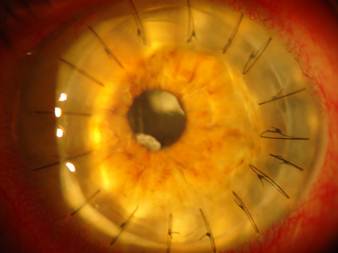Corneal Transplant Surgery Procedure
Introduction
Corneal transplantation refers to procedures in which abnormal corneal tissue is removed from the patient’s eye and replaced by healthy donor cornea.
There are various indications for carrying out this type of surgery and these include:
1. Vision improvement - for conditions such as:
a. Keratoconus
b. Fuch’s endothelial dystrophy
c. Corneal scarring following previous infection/injury
d. Other corneal dystrophies
2. To preserve the integrity and shape of the eye such as in patients with corneal thinning
3. To improve the appearance of the eye
Procedure Overview
there are several different approaches to surgery. The operation can be carried out as a full-thickness corneal transplant or as partial thickness lamellar transplants (anterior or posterior). In either case, donor material is sourced from the UK Transplant Authority, in advance of the surgery.
The operation is often carried out under General Anaesthetic, or Local Anaesthetic with sedation. The donor cornea is prepared first and then the recipient patient cornea is made ready to receive the new corneal graft. Depending upon the technique used, the donor cornea may/may not need to be stitched into place. The operation is done extremely carefully, taking between 45 and 120 minutes.
Aftercare
After the procedure is completed, you will be given a full explanation regarding post-operative drops and tablets and follow up care. Protective eye shields will have been placed over the treated eye to prevent you from rubbing your eye for the rest of the day and also whilst sleeping during at night.
During the early post-operative period it is important not to squeeze or rub the eyes. Antibiotic and anti-inflammatory drops are used to prevent infection and decrease inflammation.
After leaving the clinic, patients are encouraged to rest/sleep for a few hours. The majority of patients will have mild to moderate discomfort beginning a few hours after the procedure and this usually disappears within 24 - 48 hours.
Patients are usually seen 1 day, 1 week and 2 weeks after surgery. You will need to be off work for at least 2 weeks. Subsequent further consultations will also be required.
You will be using eye drops throughout this period of time and it usually takes several months for the vision to start stabilising.

If stitches were used, these will be removed in stages starting at around 9 months. Further surgery may be necessary to deal with large amounts of astigmatism.
It is important to understand that, depending upon the type of surgery undertaken, it will take several months (as much as 18) before full visual benefits are realised.